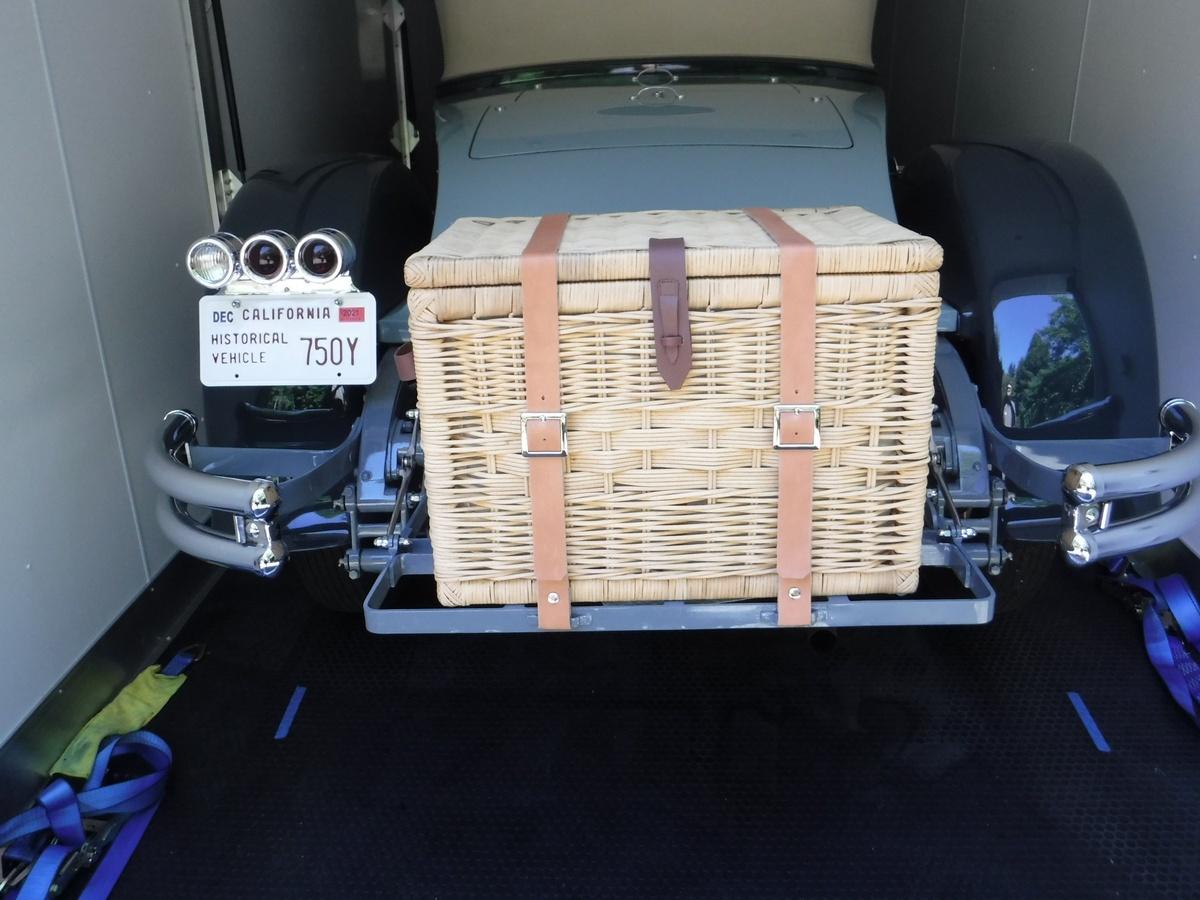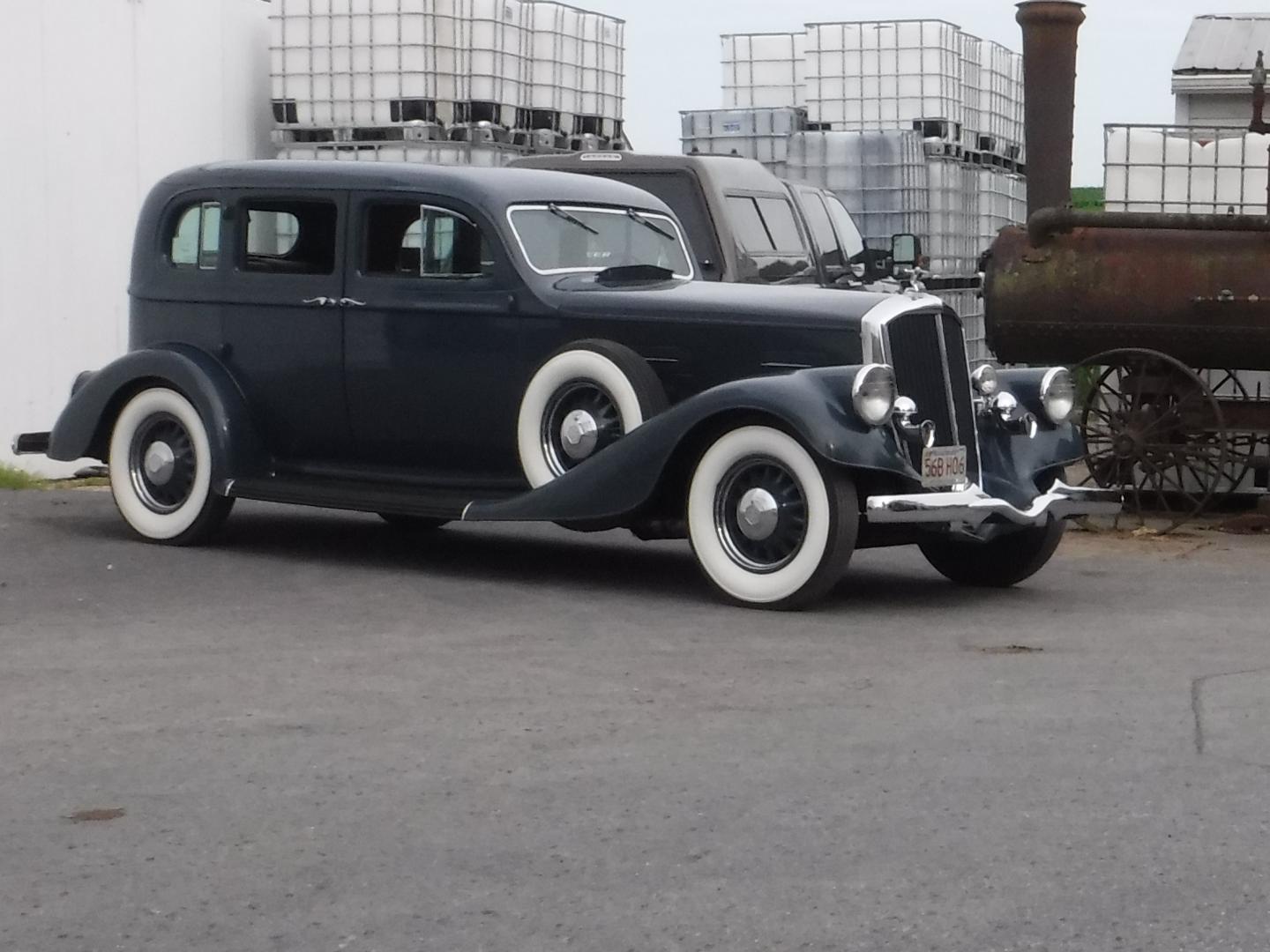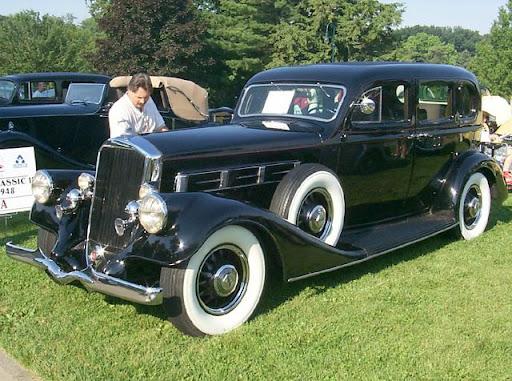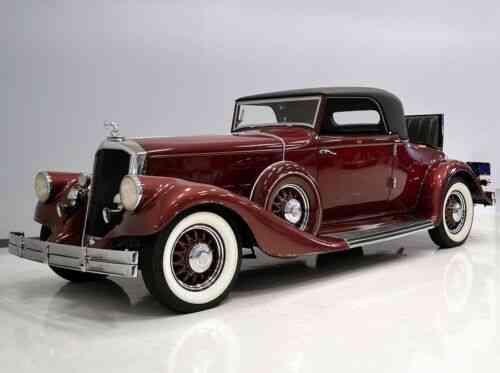- Home
- About Us
- Join/Renew
- Member Benefits
- Member Pages
- Log In
- Help
- Museum Store
Don, isn’t a Runabout what you would take on a picnic in the country? So we added the picnic basket. It was difficult to find one large enough that it looked OK. The perspective in the photo makes it look bigger than it is.

Jim,
The original post has been forwarded to one of our legal guys.
Jim,
Pierce Mfg. (now owned by Oshkosh) that makes Pierce Firetrucks has been in business since 1913. Their trucks are branded Pierce although they do make an Arrow model. I’m not sure how that fits into the Pierce-Arrow trademark issue.
Dave
Peter and Herb,
My cap is 16 TPI.
Adam,
When you get done with the process, send me any updates you think should be added, and I’ll re-print the process. Thanks.
Peter,
The inside diameter (top of threads) of the radiator neck on my Series 36 is 1.97″. Cap is 2.03″ diameter across the top of the threads. I didn’t check the pitch, but can if you need it.
Dave
Adam,
I am told yours should be 2 shoe. I don’t know enough about the 8 cyl cars to know which you have. Let me know what you find out, it might be time for an update on the subject in the PASB.
Adam,
Two other PASBs you might check are 1974-5 and 1977-3. One is on the 3 shoe brakes the other on the 2 shoe. I am not sure what yours has. The 74-5 issue has lots of pictures. Do you know which type of brakes you have?
Dave
Fred,
100530 is a 1930 Model C and 230872 is a 1932 Model 54. Neither engine number is in our records. I will enter them onto your record. If you get the chance, could you check the frame behind one of the front wheels (usually right) for a plate with the serial number? They might prove helpful. Thanks for your help.
Hi Fred,
Could you post or e-mail the serial number so I can update PAS records? Good luck on the project.
Dave
OK, how about this one? I had forgotten I took this picture. A 1934 840A that was at the Lancaster meet and belonged to John Cislak. You might ask him about the originality
.
Photos stolen from the internet. I have no idea if it’s original but at least it gives an idea what it looks like.


Joe,
Glad you got the car home. It looks like it will cleanup nicely.
Welcome to the Pierce-Arrow Society.
Try John Cislak, he specializes in ’30s era Pierce-Arrows. 413/543-9017
Email: [email protected]
Do you own the Pierce-Arrow or just rebuilding an engine for someone else?
Dave
My experience with Passport was the opposite. They said two to three weeks and it was three months. They didn’t return calls, wouldn’t give an answer when they were going to pick the car up and then called and said we’ll be there today, no notice. I gave them a short window when I would be out of the country and couldn’t accept delivery. They acknowledged this and said they would work around it. Fortunately I got home early because they showed up during the time I was supposed to be gone. To top it off, the car was damaged during transport. I had been given a good recommendation prior to hiring them.
I agree about brokers, be careful.
Dave
That would do it. According to the S80 wiring diagram, the wire from the starter should be the hot from the battery so if it shorted to the case of the ammeter there were probably some sparks. You mention the post to case is an open. Check the condition of the insulator on the ammeter post and then check the posts of the ammeter with your ohmmeter to the case while wiggling the post and see if they short, just in case an insulator was damaged. Found the sound of it, the wire from the starter to the ammeter would have taken the current surge. Any damage to the ammeter would have been from heat. It sounds like you should replace the wire, check for shorts with your ohmmeter and then see how things work. Possibly your ammeter is OK.
The right post looks like it has a nut or spacer under the the wire end. Was there one on the left post? If that is missing, the wire end would be closer to the case possibly allowing the short to the case. Maybe the extra voltage from the 12v jump was enough to initiate the short.
Judging from the wire in the upper right of your photo, it would be a good idea to check the condition of all of your wiring.
Dave
Jason,
Give us a little more information. Are you saying that the ammeter shorted out internally or that there is a short somewhere in the electrical system that you need to find?
What did your ammeter do that makes you think it is shorted? If an ammeter shorts internally between the terminals it usually just stops working but everything else will work, unless it shorted to the case. If it failed open, then everything except the starter will be dead. You can usually bypass the ammeter. What lead to this? It is possible you may have more problems than the ammeter.
Check with Greg Long about where to find a replacement.
Dave
Bill and Dave,
The new owner has joined the PAS and has been on the website. Perhaps he will introduce himself. The vehicle has been moved to his record. Serial numbers are searchable in the Vehicle Roster (hint).
Dave
Kenneth / Jim,
The internet tells me: 303 Aerospace Protectant reduces fading and the non-oily, anti-static finish repels dust, dirt and staining. Unlike many products, 303 Aerospace Protectant does not contain silicone, oils, waxes, glycerin or petroleum distillates.
I looked up the SDS and most of the ingredients are listed as proprietary, along with water, ethylene glycol, magnesium nitrate and Glucitol. All Greek to me.
That being said, I have used 303 on my modern cars for over 10 years and have been happy with the results, much more so than Armorall. 303 does not leave the shiny surface that Armorall does. It will bring out the color a little. I have used it on dash tops and the inside door panels and so far none have split or faded even when exposed to the sun most of the time. My daily driver is outside all of the time and I have used 303 on it for ten years. All good so far. I use it as you suggest, apply it to a rag and wipe it on the surface. I have not noticed any problems with it harming paint.
I have NOT used it on any old car materials.
I have used the fisheye preventive in automotive paint and it seems to work. You should wipe the surface down with a surface prep designed to remove silicone residue first.
Dave
Doug,
I found this in a post on the AACA site.
“Now run by Melissa Klein it is at 3395 NW Elm Ave, Redmond, OR 97756 541-410-5671.”
